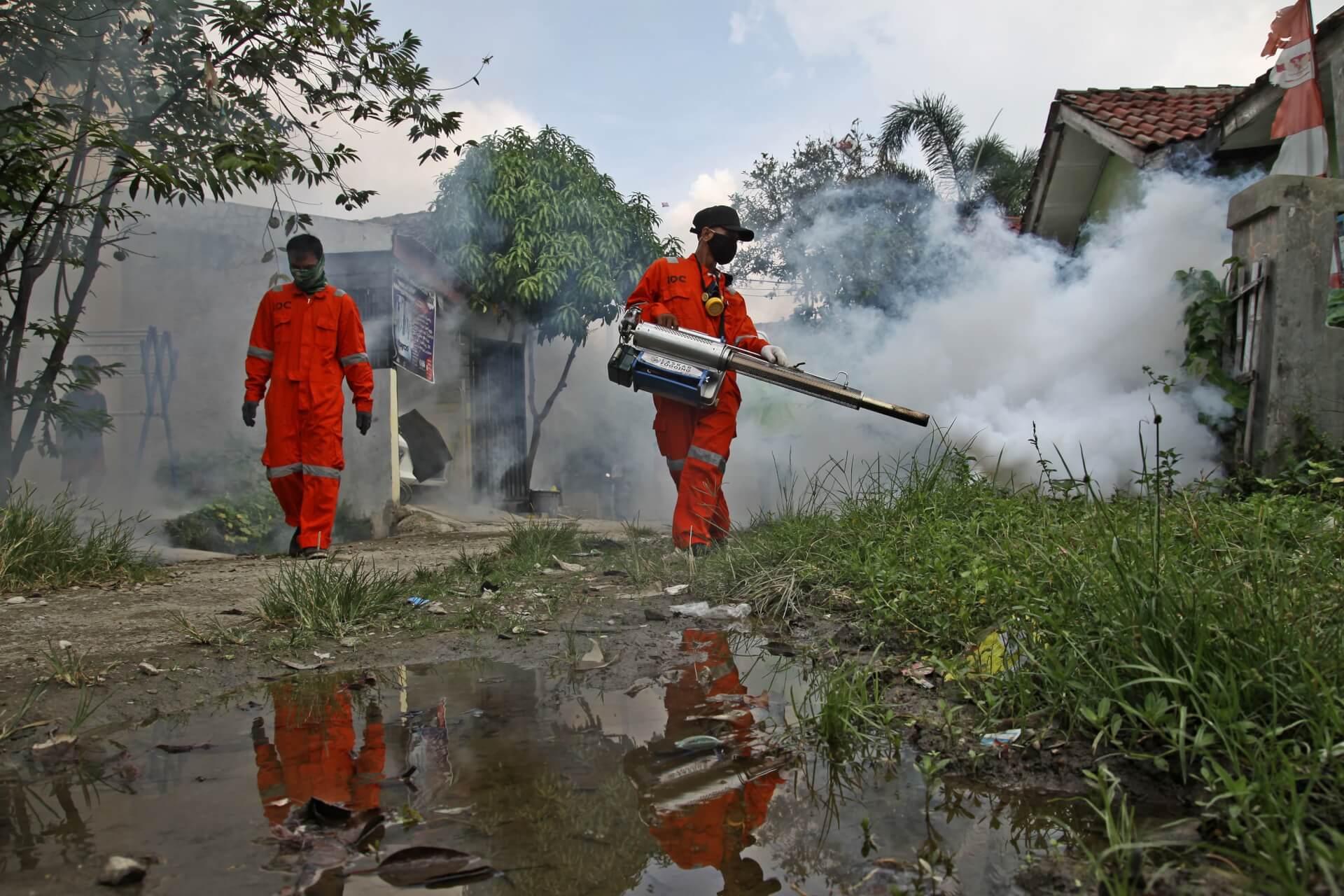The COVID-19 pandemic inadvertently prompted an essential conversation on how climate change could not only accelerate but also instigate new public health crises. This concern, though, was short-lived and the conversation soon lost momentum, despite experts warning that the world is on the brink of several other disease outbreaks.
One such crisis is the sudden surge in dengue across South Asia, where outbreaks have been aggravated by natural disasters. Given the region’s limited preparedness for such a dual threat, there is a danger this the situation could quickly get out of hand.
Asia has always been at high risk for dengue outbreaks and holds 70% of the global burden of dengue cases. However, climate change has only made these outbreaks more frequent and intense.
For instance, in India, dengue cases increased by 22% from 2019 to 2021.
Similarly, the World Health Organisation (WHO) warned of a disease outbreak in Pakistan following recent floods that have taken over 1,500 lives.
Nepal, too, reported over 1,000 cases in September alone and declared the disease to be “endemic.”
Bangladesh and Afghanistan have also seen a spike in numbers.
Must listen @BBhuttoZardari address on #Pakistanfloods and ongoing disaster, the expected epidemics to follow (malaria, dengue, gastro, so much more) and food shortage due to millions of crops destroyed #Emergancy #PakistanNeedsJustice https://t.co/I3xqBXQAEQ
— Bakhtawar B-Zardari (@BakhtawarBZ) September 23, 2022
The correlation between the increase in cases and climate change is undeniable. Several studies have confirmed that the survival rate of mosquito eggs rises goes up as temperatures rise; higher temperatures also make it easier for mosquitos to transmit dengue. In fact, an additional one billion people are predicted to be at risk of dengue by 2080 due to rising temperatures.
Dengue is also aggravated by rising sea levels, heavy rainfall, and flooding, as seen in Pakistan, where stagnant water in stormwater drains and containers has provided an ideal breeding ground for dengue-carrying mosquitos, providing an urban replacement for traditional habitats such as tree holes and bromeliads. As a result, mosquitoes have made their way through urban areas, which have a significantly higher population density.
Health services are also severely disrupted during floods, making dengue a more fatal disease than it would otherwise be.
Countries in the region have launched a series of containment measures as cases continue to rise.
For instance, Nepalese authorities launched a “search and destroy” campaign for mosquito larvae.
Similarly, Pakistan has released three million tilapia fish and chemically treated water bodies to destroy mosquito larvae in areas such as ponds where water cannot be drained.
However, these methods are primarily reactive and not preventive and may be insufficient as the dengue threat continues to grow.
A message from WHO Representative to Nepal, Dr. Rajesh Sambhajirao Pandav, on the current #dengue outbreak in the country. @PandavRajesh pic.twitter.com/Jma3R8rxTK
— WHO Nepal (@WHONepal) September 16, 2022
One preemptive tool is the Wolbachia symbiotic bacteria, which blocks mosquitoes from transmitting viruses. Exposure to Wolbachia-infected mosquitoes can immunise dengue-prone populations from the disease. The bacteria are self-sustaining and cost-effective, making it a viable solution for cash-strapped countries.
South Asian countries must also re-evaluate their aversion to cross-border cooperation, which would allow them to pool their resources and knowledge to combat the disease. As of now, there are no such regional collaborations that facilitate the exchange of data and information on dengue or any other such diseases. However, such mechanisms do exist in other areas—such as hydropower projects, water management, and nuclear installations—and could in theory be replicated for disease prevention.
The absence of regional collaboration can have devastating effects. For example, dengue prevention and containment may take a backseat as Pakistan prioritises dealing with the floods and the country’s prolonged economic crisis, which could have knock-on effects across South Asia.
#SDG13 - Climate change will put more than half of humanity at risk of contracting dengue. The #Wolbachia method pays for itself within a few years and has no recurring costs once it has been established.
— World Mosquito Program (WMP) (@WMPglobal) September 23, 2022
Learn more about our method: https://t.co/VsfU71mT1X #FlipTheScript pic.twitter.com/0IGmVVl5qK
In fact, dengue is not just a cause of concern for South Asia. Outbreaks have also been reported in nearby Vietnam and Laos.
While dengue is not as infectious as COVID-19, its life-threatening nature demands immediate international coordination and preventative efforts, particularly considering that the disease continues to spread to areas where it has not previously been reported. The increased spread of dengue is symptomatic and indicative of the much larger issue of how climate inaction has left the world open to new and unprecedented—but ultimately preventable or containable—waves of public health crises.

